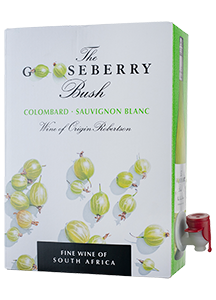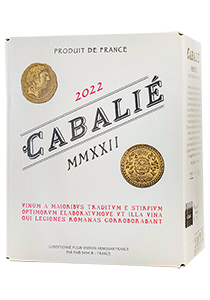Filter by
- £123.45 per caseSAVE £128.40
- £100.00 first instalment
- Every vintage The Gooseberry Bush hits the mark for flavour and value - super fresh and citrusy£38.00 per box
- Our bestselling, big red Cabalié, now in a handy wine box and equivalent to just £9.50 a bottle£38.00 per box
- £7.99 first instalment
- £0.00 first instalment
- £0.00 first instalment
- Showing (1 to 7 of 7)
1
Page 1 of 1
Wine FAQs
What are the environmental advantages of choosing boxed wine?
Opting for boxed wine over traditional bottled wine is much more eco-friendly. Here’s why: ·
- Less packaging waste – boxed wine uses way less packaging. The cardboard box is recyclable, and the inner plastic bladder uses much less material than a glass bottle.
- Lower carbon footprint – making and transporting glass bottles takes a lot more energy than cardboard and plastic. Glass is heavy, so it uses more fuel to ship. Boxed wine is lighter, which means fewer greenhouse gases from transportation.
- Efficient space use – boxed wine is more compact and stacks better, so it takes up less space during shipping and storage. This means fewer trips and even lower emissions.
- Stays fresh longer – once opened, boxed wine stays fresh for weeks thanks to the vacuum-sealed design, unlike bottles which can go bad in days. Less wasted wine!
- Recyclable materials – both cardboard boxes and plastic bladders are easy to recycle.
- Uses fewer resources – making glass bottles uses a lot of energy and raw materials. Boxed wine packaging uses fewer resources, which is better for the planet.
- Less breakage – glass bottles can break during shipping or handling, causing waste. Boxed wine packaging is more durable, so there's significantly less chance of breakage and waste.
What are the common misconceptions about boxed wine?
Boxed wine often gets a bad rap, but unfairly so – let's debunk some wine box myths. While some people think boxes are for low quality or cheap wine, there are many high-quality options for both boxed red wine and boxed white wine available at all price points. Contrary to popular belief, the packaging doesn’t affect the taste – and boxed wine stays fresh longer once opened. Modern wine boxes are typically becoming more aesthetic and are more eco-friendly, using less material and being lighter to transport. Plus, they’re easy to pour and store.
What variety and style of boxed wines are available?
Boxed wine comes in a surprising variety of styles and types, catering to all sorts of tastes. You'll find popular red wines like Cabernet Sauvignon, Merlot, Pinot Noir, and Shiraz, as well as Chardonnay, Sauvignon Blanc, Pinot Grigio, and Riesling for whites.
There are also speciality options like organic and vegan wines, and even dessert wines like Port and Moscato. And while less common, sparkling wine boxes do also exist. So, no matter what you're in the mood for, there's likely a boxed wine that fits the bill.
What’s the shelf life of boxed wine?
Boxed wine can last quite a while, depending on whether it's opened or not. If it's unopened, you've got about 8-12 months for white and rosé wines, and up to a year for reds. Once opened, boxed wine stays fresh longer than bottled wine – typically around 4-6 weeks. That's because the vacuum-sealed bag inside the box protects the wine from oxygen, which can spoil it faster in a bottle.
How should wine boxes be stored?
To keep your boxed wine tasting its best, store it in a cool spot away from sunlight and heat sources. Temperatures between 7-18°C are perfect – think a pantry shelf rather than near the stove or fridge. Keep the box upright to prevent any spills and make sure the spout stays clean. It’s also a good idea to choose a dry area to avoid any mold creeping in on the cardboard. Once you’ve popped the spout and enjoyed a glass or two, stick the boxed wine in the fridge to keep it fresh. Cooler temps slow down any oxidation, meaning your wine will stay tastier for longer.
Tips for serving and tasting boxed wine
- Chill before serving – just like bottled wine, boxed wine tastes best when served at the right temperature. Chill white and rosé wines in the refrigerator for a couple of hours before serving. For red wines such as Beaujolais, a slight chill can also enhance flavours.
- Pouring – most boxed wines come with a convenient spout for pouring. Hold your glass at a slight angle when pouring to minimise splashing and ensure a smooth pour.
- Aeration – boxed wines can benefit from a bit of aeration, just like bottled wines. Swirl the wine in your glass or decant it briefly before serving to allow flavours to develop.
- Glassware – use proper wine glasses with a larger bowl for reds and a narrower bowl for whites and rosés. This helps concentrate aromas.
- Tasting – if you want to take your tasting experience up a notch, you can swirl the glass gently to release aromas, then take a sip and let it roll over your tongue to appreciate its flavours and finish.
- Pairing – pair boxed wine with food just like you would with bottled wine. Match lighter wines like Sauvignon Blanc with seafood or salads, while richer reds like Cabernet Sauvignon go well with grilled meats or pasta dishes.
Remember, wine tasting is a personal experience. Enjoy the journey of exploring different flavours and discovering what you like best about each wine.











